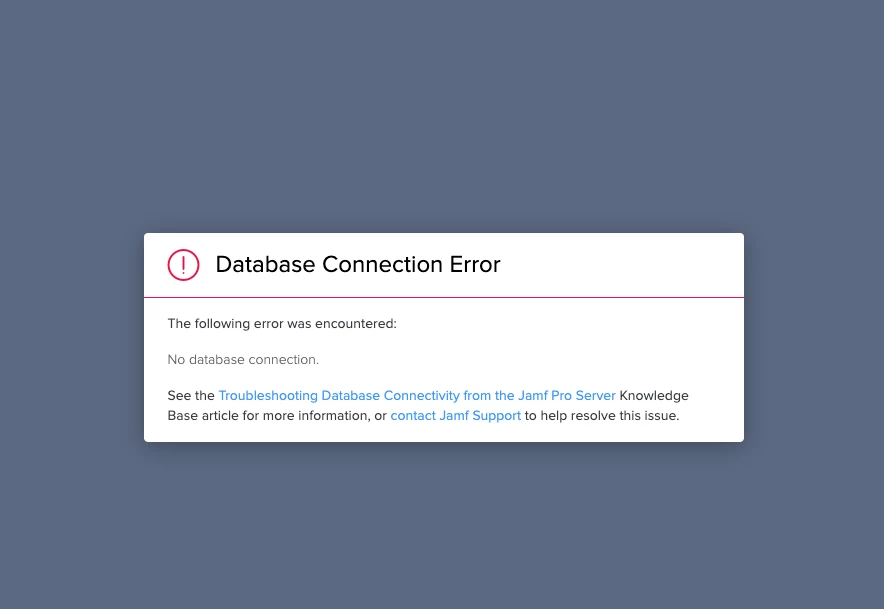Trying to spin up an on-prem trial and have been receiving the attached database error accessing the JSS portal via browser. 8443, 3306, 8080 ports are open. I've verified MySQL, Tomcat, Java, Jamf CLI tools are all installed and running. I've run through all the troubleshooting presented in the error. I've googled like a mad man, have tried many possible MySQL fixes with no luck. Has anyone seen this before? I ran through mostly manual steps for setting it up including tomcat. Then I ran the Jamfproinstaller.run file which also configures tomcat. Could that cause an issue if tomcat is already configured on the host? Any help is greatly appreciated.






